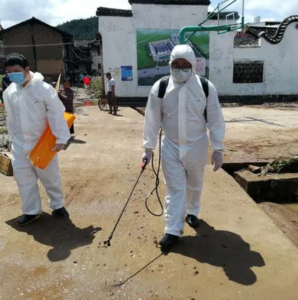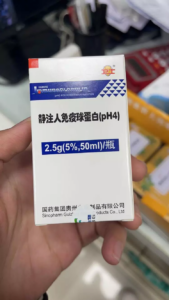
What is the pathogenicity? Is there a secondary infection? How to prevent it? …… Academician Zhang Boli explains the hot issues of XBB strain
Recently, a new variant of the XBB strain of Omicron has raised concerns. The Chinese CDC released information on the 4th that the possibility of a large-scale epidemic caused by the XBB series of mutant strains in China in the short term is low. So, what are the characteristics of this new strain? What is the pathogenicity? Will it cause secondary infections? Does it mainly attack the intestinal tract? What can be done to prevent it? What if secondary infection occurs? In response to the hot issues of social concern, the reporter interviewed Zhang Boli, an academician of the Chinese Academy of Engineering.
Concern 1: What are the characteristics of the new strain?
Zhang Boli: At present, there are reports of XBB.1.5 strain imported from outside China, but it has only been detected in a very small number of incoming isolates and has not yet caused local transmission in the society.
Data from foreign studies show that the XBB.1.5 strain spreads more rapidly compared to the BQ.1 strain and the previous BA.5 strain. A study in New York showed that it took 26 days for the BQ.1 strain to reach a 30% infection rate, while the XBB.1.5 strain took only 17 days from the discovery of the strain.
XBB.1.5 differs from its sibling strains in that it has an additional key mutation, F486P, which gives it a higher human ACE2 receptor binding affinity and a higher immune escape capacity.
The new coronavirus is an RNA virus, and because the genetic material of the virus is single-stranded RNA, it is structurally unstable and has a high mutation frequency, and may mutate in the future.
Concern 2: How pathogenic is the new strain?
Zhang Boli: According to the available research data, the pathogenicity of the XBB strain is comparable to other sublines. The peak of the XBB outbreak in Singapore last October-November did not result in a significant spike in deaths. According to a Singapore government release dated October 14, 2022, there is no evidence that the XBB is more pathogenic than previous mutant strains. Even the risk of hospitalization was reduced by 30% for XBB compared to the BA.5 strain.
On October 27, 2022, the World Health Organization issued a statement concluding that as of today, there are no data to support a significant difference in the severity of disease caused by XBB compared to BA.5. There is no current evidence of enhanced pathogenicity of XBB strains compared to other strains, nor is there evidence of specific pathogenicity of XBB strains for the gastrointestinal and cardiovascular systems. Symptoms of infection with the XBB subtype remain predominantly respiratory, including fever, nasal congestion, sore throat, headache, and fatigue, similar to those of the BA.5 strain.
Concern 3: Will the new strain cause secondary infections?
Zhang Boli: The probability of secondary infection with the new coronavirus is mainly related to the level of human immunity, the variation of the virus strain, and personal protection at a later stage. The current strain of XBB differs from the BA.5 prevalent in China, and the risk of reinfection will increase to a certain extent when the immune level of the human body decreases after a period of infection with BA.5 and a new strain with strong immune escape ability is encountered.
However, you do not have to worry too much, the human immune system is already functioning after a new coronavirus infection. Current clinical observations show that the probability of secondary infection with the new coronavirus within 3 to 6 months after infection is still relatively low. People with normal immune function are at relatively low risk of reinfection within a short period of time, and the symptoms after infection are usually milder than the first time, although there are isolated reports of worsening symptoms.
Concern 4: Does the new strain mainly attack the intestinal tract?
Zhang Boli: Some patients infected with the new strain do develop gastrointestinal symptoms such as vomiting and diarrhea. The XBB strain still mainly attacks the respiratory tract, so the statement that “XBB mainly attacks the intestinal tract” is not accurate.
There are many reasons for diarrhea after infection with Neocon, including viral enteritis due to viral infection of the intestinal tract, gastrointestinal dysfunction induced by toxins produced by the virus, and diarrhea caused by medications. Diarrhea caused by a new coronavirus infection is usually mild and usually does not require medication and resolves on its own within a short period of time. If the diarrhea is severe, the lost fluids and electrolytes should be replenished, and usually oral rehydration can achieve therapeutic effect instead of blindly taking antidiarrheal and antibacterial drugs.
Concern 5: How to prevent new strains?
Zhang Boli: The “main force” against the new coronavirus is autoimmunity, so it is better to hoard drugs than to hoard a “good body”. Adjust your body condition, pay attention to rest, drink plenty of water, eat more fresh fruits and vegetables, ensure the intake of nutrition, maintain a good mood, and improve the immunity of the body.
For newly recovered patients, the best way to prevent secondary infection during the epidemic is to implement protective measures, including wearing a mask, paying attention to hand hygiene, diligent ventilation, and maintaining social distance. To reduce the risk of re-infection, it is important to keep warm, minimize gathering, ensure good hygiene and nutritional diet.
In the past three years, the treatment experience shows that the use of traditional Chinese medicine, acupuncture, massage and traditional gongfu can promote the healing of patients and improve symptoms such as weakness and shortness of breath. Taking active interventions to promote the healed person’s physical and mental recovery to a better state can also help prevent secondary infections.
Concern 6: What about secondary infections caused by new strains?
Zhang Boli: In case of reinfection, it is important to distinguish between “re-positive” and secondary infections. The “re-positive” occurs within 2 to 3 weeks after the conversion, the patient generally has no obvious clinical symptoms, mainly residual virus fragments in the body in the process of discharge is detected positive, generally not infectious; while the secondary infection generally occurs within a few months to a year after the first infection, equivalent to a new infection, generally have clinical symptoms, and The second infection usually occurs within a few months to a year after the first infection and is equivalent to a new infection, usually with clinical symptoms and a high viral nucleic acid load.
Patients with “re-positive” infection do not need to be treated again, but should pay attention to rest, proper diet and nutrition. Patients with secondary infections need to be treated again, and they need to do a good job of personal protection, self-isolation and protection of family members and colleagues to reduce the risk of transmission of the disease.


Average Rating